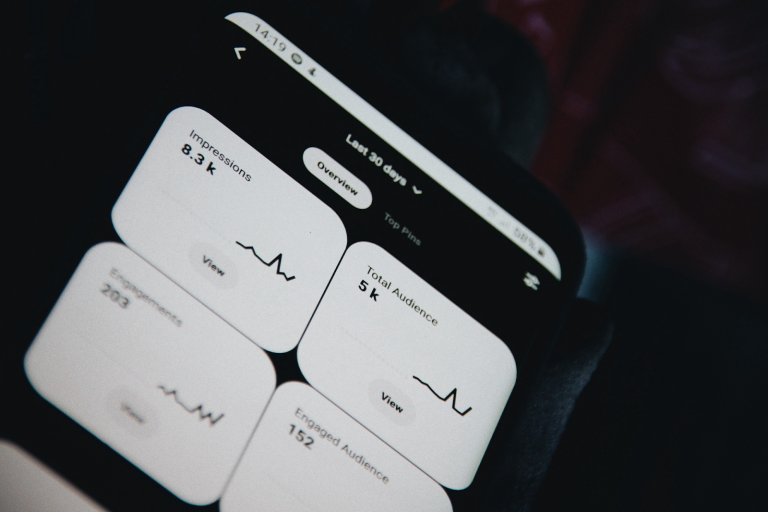How to set up call tracking with Bitrix24 via Exolve API
A call tracking system, or call tracking, is a true friend of marketers and entrepreneurs. It helps to understand which channels work best, how to optimize advertising budgets, which calls are effective, where the calling clients disappear to, and why the client base is growing or not growing.
It is more convenient to integrate such a system into CRM via an API platform. I will try to explain why this option is better than traditional call tracking services.
The API platform easily integrates call tracking into most existing systems. After integration, call data is automatically transferred to the CRM, analytical system or any other platform. Traditional services cannot always boast such flexibility.
API platforms are easier to scale. You can easily increase or decrease the volume of monitored calls depending on business needs, without changing your usual services or reconnecting equipment.
The API allows you to customize the system to your specific business needs. It makes it easy to create reports, customize call processing logic, etc. Traditional services offer more limited settings.
With the help of API, you can implement complex scenarios for tracking and processing calls that are not available in standard services. For example, automatic distribution of calls based on their source, time of day, or other factors.
In many cases, API platforms are more cost-effective. Using them, you pay only for the features and volumes that you actually use, without overpaying for unnecessary options.
Access to the listed advantages lies through the call tracking setup. I will consider the stages and details of such setup using the example of well-known Russian services Bitrix24 and MTS Exolve.
First steps
The first thing you need to do is register on MTS Exolve and gain access to the service.
Go to the website API platforms and register. If you have an MTS phone number, then the path is simpler, just log in with your MTS ID. After registering on the site, follow the instructions and get access to the service.
Buying a number
Buy a phone number on the platform is not difficult, MTS Exolve has high-quality and clear documentation. Most likely, one number will not be enough to implement call tracking. It depends on what you want to get as a result, so it is better to decide on the type of call tracking.
Types of call tracking
There are three main types: static, dynamic and combined. With static, each traffic source is tied to a separate phone number. For example, for street banners – one, for social networks – a second, for audio advertising – a third. The call tracking system records where the call comes from and links the information and the traffic source, that is, you are guaranteed to know which ad brought how many clients.
Dynamic call tracking is more complex. In it, phone numbers are assigned to visitors to Internet resources. For example, one person saw an ad on VKontakte, and the other on RuTube. Both went to the site, but they saw different phone numbers, which allowed the tracking system to find out which ad the response was to.
The combined type combines both types: the dynamic type is usually used to collect data from online channels, and the static type is used for offline channels, and then everything is transferred to a single report.
The table below shows the advantages and disadvantages of each option.
| Static count tracking | Dynamic call tracking | Combined call tracking |
Maximum efficiency | For a small company with multiple advertising channels and offline advertising. | For serious advertising budgets and a large number of traffic sources. | For companies that conduct both online and offline advertising. |
Advantages | You will know exactly how many applications there were, what the conversion rate was, and how much profit there was. | You will be able to evaluate not only data by channels, but also by individual Call-to-Actions or keywords. | Get a complete picture across all channels and be able to make an accurate analysis of effectiveness, and then adjust your advertising budget. |
Flaws | You won’t be able to find out which ad wording “shot” or how the keywords worked. | It is noticeably more expensive than the static option and is not particularly effective for assessing offline channels. | Expensive because it requires a lot of phone numbers. |
Summary | You will collect basic statistics, but there will be no deep analysis. It shows the effectiveness of calls with a small advertising budget. | Get a full picture of your advertising: what worked and what didn't. You'll be able to increase conversion by improving your ad texts. This will cost you more money. | The best call tracking system that provides high-quality statistics. The best option for large advertising budgets. |
You can roughly calculate the required number of numbers using the formula: take the average number of visitors to an Internet resource per day, divide by 100, add one and get the number of numbers that will be enough to set up call tracking.
After determining the number of numbers you need, proceed to setup.
Setting up phone numbers
To set up phone numbers to receive incoming calls and make outgoing calls, let's dive into programming.
Setting up a phone number to receive incoming calls
To ensure that incoming calls are received, we will perform two steps: create a server and set up a webhook.
To receive incoming calls via an API platform (in our case, Exolve) using webhooks, you will need your own server or cloud service that can receive HTTP requests. This server will process incoming call notifications sent by the platform to the specified webhook URL.
There are several solutions to this issue: you can create a server yourself and configure it to receive requests, you can rent a physical or virtual server, or you can use a cloud service. Choosing the best option is the topic of a separate article.
The next step is to set up a webhook on your server, where notifications about incoming calls will be sent. The webhook must be accessible from the Internet. It will look something like this:
from flask import Flask, request, jsonify
app = Flask(__name__)
@app.route(‘/webhook', methods=['POST'])
def webhook():
data = request.json
# Обработка данных входящего звонка
print(f"Incoming call from {data['caller']} to {data['called']}")
return jsonify({'status': 'received'})
if__name__=='__main_':
app.run(port=5000)Next we set up API platform to send notifications about incoming calls to your Webhook. This is usually done by calling the appropriate API method, for example, configure_inbound_call_webhook. That's it, you can make a test call and check how the scheme works.
Setting up a phone number to make outgoing calls
When setting up outgoing calls you will need:
Prepare the server to send HTTP requests.
Create and send a request to make a call using the required parameters.
Process the API response and log the results for monitoring.
Here is an example HTTP request to make an outgoing call in Python using the requests library:
import requests
# URL API платформы Exolve
base_url = "https://api.exolve.mts.ru/v1"
# Baw API токен
api token = "YOUR_API_TOKEN"
# Заголовки для авторизации
headers = {
“Authorization”: f'Bearer {api_token}",
"Content-Type": "application/json"
}
# Данные для звонка
data ={
"from": "YOUR_PHONE_NUMBER",_# Ваш номер телефона
"to": "CLIENT_PHONE_NUMBER" # Номер клиента
}
# Отправка запроса на выполнение звонка
response = requests.post(f"{base_url}/calls", headers=headers, json=data)
if response,status_ code == 200:
print("Call initiated successfully.")
else:
print("Failed to initiate call:", response.json())So, incoming and outgoing calls are configured, you can proceed directly to integration with Bitrix24 CRM.
Integration of call data with Bitrix24
To integrate MTS Exolve and Bitrix24, you need to create a webhook in Bitrix24. The process will look like this:
Log in to your Bitrix24 account.
Go to the Developers section from the main menu, to the webhooks settings.

Then select the “Ready-made scenarios” section.

Next, go to the “Other” tab.

And select “Incoming webhook”.

Creating a webhook. In order for the webhook to work as expected, it is necessary to “give” it access rights. To do this, click on the corresponding line:

In the drop-down window, you will see a list of rights from which you can select the ones you need. At a minimum, these should be “Telephony” and “Telephony (making calls)”. Save the results and get the webhook URL. Save it in a separate file, it will be used to send data from the API platform to Bitrix24
Then go to your personal account on the MTS Exolve website and act in accordance with instructions.
Additional steps to set up call tracking
Creating call tracking on your own will require a few more steps. First, you need to take care of data security by creating a database to store call information (caller number, call time, duration, recording URL, call recording, etc.). You can use PostgreSQL, MySQL, or MongoDB.
Secondly, you will need information to analyze the performance of your system, so you will need to create a web interface or control panel to monitor calls and view reports.
Well, it would also be nice to include options for expanding the functionality of the system: setting up automatic responses, pre-recorded messages, and maybe even speech recognition.
These operations can only be performed by an experienced programmer. However, when interacting with Exolve, you can do without this – the platform has the appropriate functions, including transcription of recordings.
Benefits of call tracking via API
The advantages of using an API platform are determined by the direction and specifics of the business. Several main ones:
With call tracking via MTS Exolve, you can accurately track call sources, finding out from which advertising channels your clients come. This data will be much more accurate than that provided by the call tracking of the CRM system. The reason is that CRM often does not have dynamic call tracking.
Get access to detailed call analytics to help you understand which campaigns or channels are most effective for your business.
Knowing which channels attract the most calls will help you optimize your advertising budgets by reallocating resources to the most effective channels.
Call analysis allows you to identify strengths and weaknesses in working with clients over the phone, which can ultimately lead to an increase in the conversion of calls into sales or actions.
Using call recordings and analytics, you can identify problem areas in customer service and improve the quality of interaction with them.
Knowing which advertising and marketing activities are driving calls will help you optimize your campaigns to make them more effective.
Briefly about the main thing
To set up a call tracking system in Bitrix24 that uses static and dynamic call tracking, it is worth using the API.
The order of actions during setup:
Registration on the platform.
Purchase of telephone numbers.
Setting up numbers to receive incoming calls and make outgoing calls.
Integration of call data with Bitrix24 via webhook setup.
System testing.
You will have many assistants to help you with these steps: Exolve managers, detailed documentation and community.
Author: Roman Andreev




